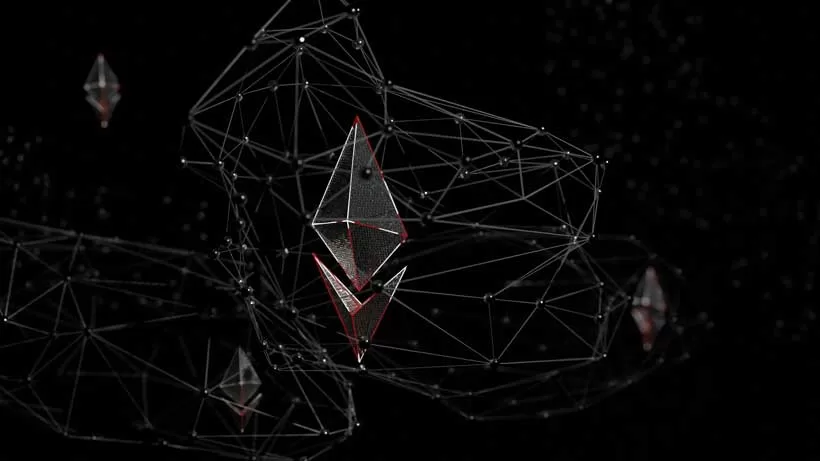Dedicated platforms like Coindataflow.com offer a comprehensive analysis of cryptocurrencies, including Avalanche price predictions. Developers, businesses, and investors can access complete information on prices, market capitalizations, charts, and statistics for both Avalanche and Ethereum. To find out which one is better, you should read the article below where we compare Avalanche and Ethereum.
The Basics of Ethereum
Ethereum, launched in 2015 by Vitalik Buterin, is a distributed platform that enables developers to build and deploy smart contracts and decentralized applications (dApps). It introduced the concept of a programmable blockchain, allowing for the creation of a wide range of applications beyond just cryptocurrencies. Ethereum’s native cryptocurrency, Ether (ETH), is the second-largest cryptocurrency by market capitalization, following Bitcoin.
Key Features of Ethereum:
- Smart Contracts: The platform’s primary innovation is its ability to execute smart agreements, self-executing contracts with the terms directly written into code.
- Ethereum Virtual Machine (EVM): The EVM allows developers to run code on the Ethereum network, ensuring compatibility and security across all dApps.
- Decentralized Finance (DeFi): The platform is the backbone of the DeFi movement, hosting numerous financial services, such as lending, borrowing, and trading without intermediaries.
- Wide Adoption: With a large developer community and numerous projects built on its platform, Ethereum boasts extensive adoption and a robust ecosystem.
Avalanche: The Essentials
Avalanche, launched in 2020 by Ava Labs, is a high-performance blockchain platform that aims to deliver unprecedented scalability, speed, and security. It utilizes a unique consensus mechanism called Avalanche consensus, which is a combination of Proof-of-Stake (PoS) and Directed Acyclic Graph (DAG) protocols. Avalanche’s native cryptocurrency, AVAX, has gained significant traction in the market.
Key Features of Avalanche:
- High Throughput: Avalanche can process thousands of transactions per second (TPS), significantly higher than Ethereum’s current capacity.
- Low Latency: Transactions on Avalanche are confirmed in under a second, providing a seamless user experience.
- Interoperability: Avalanche supports the creation of custom blockchains (subnets) that can interoperate with each other and other blockchain networks.
- Eco-Friendly: Utilizing PoS, Avalanche is more energy-efficient compared to Ethereum’s Proof-of-Work (PoW) mechanism, which the latter plans to transition away from with Ethereum 2.0.
Comparison of the Crucial Aspects
Performance and Scalability
When it comes to performance and scalability, Avalanche has a clear advantage over Ethereum. Avalanche’s consensus mechanism allows it to achieve a higher TPS and lower latency, making it more suitable for applications requiring fast and efficient transactions.
Ethereum’s current PoW mechanism limits its scalability, leading to network congestion and high gas fees during peak times. However, ETH’s upcoming transition to Ethereum 2.0, which will implement PoS, aims to address these issues and improve scalability.
Ecosystem and Adoption
Ethereum’s ecosystem is one of the largest in the blockchain space, with a vast number of dApps, DeFi protocols, and developer tools. The platform’s first-mover advantage has resulted in widespread adoption and a strong network effect.
In contrast, Avalanche is relatively new but has quickly gained traction due to its superior performance and flexibility. However, the adoption of Avalanche is growing rapidly, with many projects choosing to build on its platform due to its technical advantages.
Security
Security is a critical aspect of any blockchain network. Ethereum has a long track record of being a secure platform, although it has faced some high-profile hacks and vulnerabilities in the past. Its transition to Ethereum 2.0 is expected to enhance security further.
Avalanche, with its novel consensus mechanism, also offers robust security features. Its PoS system reduces the risk of 51% attacks and ensures network stability.
Development and Flexibility
Both blockchain platforms offer flexible development environments. Ethereum’s EVM is widely used and well-supported, making it easier for developers to create and deploy dApps.
Avalanche, on the other hand, offers more flexibility with its subnet feature, allowing developers to create custom blockchains tailored to specific use cases. This feature makes Avalanche an attractive option for enterprises and projects requiring specialized blockchain solutions.
Bottom Line
Determining which blockchain platform is better between two notable blockchain platforms ultimately depends on the specific needs and goals of the user. Ethereum boasts a mature ecosystem, extensive developer support, and a solid track record, making it a reliable choice for many projects. However, Avalanche’s superior performance, scalability, and flexibility make it a compelling option, especially for applications requiring high throughput and low latency.
As Ethereum transitions to Ethereum 2.0, the competition between these two platforms is expected to intensify, bringing further innovations and improvements to the blockchain space. For developers, businesses, and investors, both Avalanche and Ethereum offer unique advantages that can be leveraged to build the next generation of decentralized applications and services.
Carefully consider the strengths and weaknesses of each platform. Thus you can make an informed decision on which one best suits your needs in the constantly changing domain of blockchain technology.
